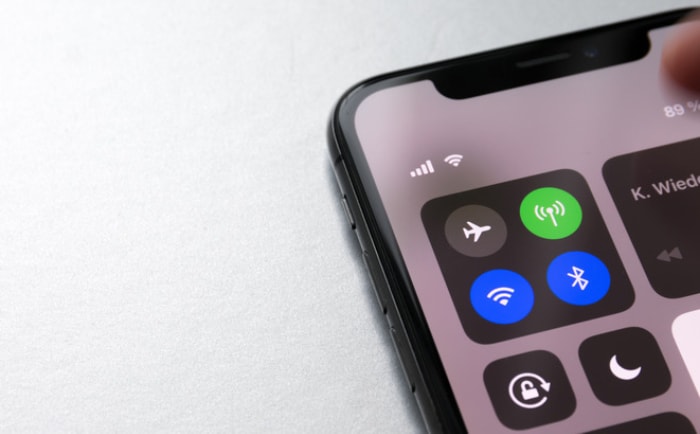How to Disable IPv6 on Windows 11: A Quick Fix

Are you wrestling with a leaky VPN or mysterious network glitches on your PC? The culprit might be an unexpected part of your Windows 11 setup: Internet Protocol Version 6, or IPv6. While this modern protocol is designed to be the future of networking, it can occasionally cause conflicts with older software and specific security tools.
Disabling it may seem like a drastic step, and experts often advise against it. However, for targeted troubleshooting or to secure a VPN that is not fully IPv6-aware, temporarily turning it off can be a necessary fix.
When to Consider Disabling IPv6
Although IPv6 is an important component of modern networking, and Windows 11 is designed to use it, specific situations may require you to disable it. Doing so is often a temporary troubleshooting step rather than a permanent solution.
The most common reasons involve resolving network conflicts, securing a virtual private network, or diagnosing connectivity problems that are difficult to isolate.
Secure a VPN Connection
One of the most frequent reasons to disable IPv6 is to enhance the security and stability of a VPN connection. Some VPN services do not fully support IPv6 traffic, which can create a vulnerability known as a leak.
When this happens, IPv6 traffic can bypass the encrypted VPN tunnel and travel over your regular internet connection, exposing your true IP address. Some VPN providers recommend disabling IPv6 to force all data through the more commonly supported IPv4 protocol, ensuring your connection remains private and secure.
Troubleshoot Network Connectivity
If you are experiencing unusual network errors, such as slow name resolution or failed connections to certain websites, a conflict between IPv4 and IPv6 could be the cause. In a “dual-stack” environment where both protocols run together, some routers or applications may struggle to prioritize traffic correctly.
Temporarily disabling IPv6 is an effective diagnostic technique. If your connectivity issues disappear after turning it off, you have successfully isolated the source of the problem and can investigate further solutions.
Understand the Risks and Recommendations
Disabling IPv6 is not without its risks, and Microsoft generally advises against it. Many core Windows services and modern applications depend on IPv6 to function correctly, and turning it off completely can lead to unexpected behavior or broken features.
For this reason, disabling IPv6 should be treated as a temporary measure. After your troubleshooting is complete, you should re-enable it. For minimal impact, it is better to disable the protocol on a specific network adapter instead of making a system-wide change through the registry.
How to Disable and Verify IPv6
Windows 11 provides two primary methods for disabling IPv6, each suited for different needs. The first is a simple, reversible change made through the graphical user interface that targets a specific network adapter.
The second is a more powerful, system-wide modification performed by editing the Windows Registry.
Disable per Adapter via GUI
The safest and most common way to disable IPv6 is on a per-adapter basis. This approach is ideal for temporary troubleshooting because it is easy to undo.
- Open the Settings app and go to Network & internet.
- Select Advanced network settings.
- Under the Network adapters section, find the adapter you want to modify (such as Wi-Fi or Ethernet) and click More adapter options.
- A new window will open showing your network connections. Right-click the relevant adapter and select Properties.
- In the properties list, find and uncheck the box next to Internet Protocol Version 6 (TCP/IPv6).
- Click OK to save the change. A system restart is recommended to ensure the setting is fully applied.
Disable System-Wide via Registry
For a more comprehensive change that affects all network interfaces, you can disable IPv6 by modifying the Windows Registry. This method is more complex and carries greater risk, so it should be performed with caution. Always back up your registry before making edits.
- Press the Windows key + R, type regedit, and press Enter to open the Registry Editor.
- Navigate to the following path: HKEY_LOCAL_MACHINE\SYSTEM\CurrentControlSet\Services\tcpip6\Parameters\
- Right-click on the Parameters folder, select New, and choose DWORD (32-bit) Value.
- Name the new value DisabledComponents.
- Double-click DisabledComponents, set its value data to ffffffff (using hexadecimal base), and click OK.
- You must restart your computer for this change to take effect.
Verify Changes and Roll Back
After disabling IPv6, you should confirm it is inactive. Open Command Prompt and run the command ipconfig.
The output for your network adapter should no longer display an IPv6 address. Test your applications and general internet connectivity to ensure that everything still works as expected.
It is crucial to have a rollback plan. If you used the GUI method, you can re-enable IPv6 by navigating back to the adapter's properties and re-checking the Internet Protocol Version 6 (TCP/IPv6) box.
If you edited the registry, you can revert the change by deleting the DisabledComponents value or setting its data to 0, then restarting your computer. If disabling the protocol causes issues, you should restore the original settings promptly.
Conclusion
Disabling IPv6 should be a deliberate and temporary action, not a permanent change to your system's configuration. For most troubleshooting, modifying a single network adapter through the Settings menu provides a quick, low-risk way to isolate network problems that is easily reversed.
The more drastic method of editing the Windows Registry should be reserved for specific situations demanding system-wide control, and only by those comfortable with the potential impact on applications and services. The best practice is to re-enable IPv6 once you have resolved your issue.
Re-enabling the protocol ensures your computer remains fully compatible with the modern internet and that all Windows features function as intended.


